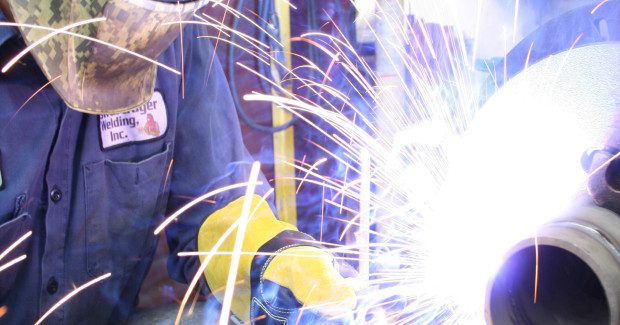Considerations When Selecting a Filler Metal (Part Two)
Although the effect of various elements in filler metals can be rather complex, a review of their general properties can also help welding operators determine which filler metal is ideal for the job. It is important to consider the properties needed in a completed weld when making the filler metal selection.
Posted: February 25, 2016
There are numerous key factors to consider when selecting a filler metal and making the right choice is critical to ensuring the completed weld can meet the necessary service requirements it will encounter. The first installment of this two-part series discussed three of those considerations: base material, welding position, and regulatory specifications and codes. In this second installment, learn about four additional factors that impact filler metal selection.
FACTOR FOUR: DESIGN REQUIREMENTS
In addition to following regulations and codes, some welding applications also require a filler metal that meets or exceeds the needs of a joint design, as specified by the engineer’s welding configuration. One such example involves welding on thin material. Using a wire that provides deep penetration may cause the welding operator to burn through the base material, so wire that offers shallower penetration would be more appropriate. Conversely, if the part to be welded is thick and features a single “V” joint, a filler metal with greater penetration characteristics allows for better tie-in at the root and sides.
FACTOR FIVE: SHIELDING GAS
Different shielding gases have different effects on filler metal, so it’s important to ensure the filler metal and shielding gas used for an application are compatible. Adding argon to CO2, for example, provides numerous benefits: It offers good weld pool control and it generates lower levels of spatter. However, argon/ CO2 mixtures allow the transfer of more of the filler metal’s chemistry into the weld deposit. Note, using a mixed shielding gas on wires designed for 100 percent CO2 can increases the risk of potential cracking due to the increased tensile strength and decreased penetration.
https://youtu.be/kNRS6zA8Jkk
Using 100 percent CO2 shielding gas offers the advantage of deep weld penetration, which is desirable when welding thicker materials. Pure CO2 does tend to have larger ball transfer, however, and can create more spatter than shielding gas mixtures that include argon. There are also wires capable of operating with both straight CO2 and an argon/CO2 mixture. When making the selection consider the available gas supply and desired weld characteristics provided by each. Always follow the wire manufacturer’s recommendation for shielding gas.
FACTOR SIX: POST-WELD HEAT TREATMENT
Some types and thicknesses of steel require preheating before welding, which allows the part to cool down at a slower rate to avoid weld shrinking issues and cracking. Post-weld heat treatment is used in some applications to reduce the stresses and to slowly lower the residual heat that was introduced during welding. This process allows the weld joint and base material to return to their desired mechanical properties.
When the material requires post-weld heat treatment, it impacts filler metal selection. Choose a filler metal capable of producing welds that respond appropriately to the application of heat and can still maintain the appropriate mechanical and chemical properties.
FACTOR SEVEN: WELDING EQUIPMENT
The type and size of equipment being used for the job impacts filler metal selection. Specifically, the power source must provide enough amperage for the diameter of wire being used. If the amperage is not adequate, a wire diameter change or a change to a higher-capacity machine will be necessary to help maintain productivity levels. Power sources should also offer the proper welding current for the filler metal, as welding in the wrong current can result in spatter and poor weld quality.
It’s also important to determine the desired weld characteristics. Filler metals that operate on reverse polarity (electrode positive, or EP) provide great penetration. Filler metals using straight polarity (electrode negative, or EN) produce a more shallow joint penetration.
CONSIDER THE FACTORS
Although the effect of various elements in filler metals can be rather complex, a review of their general properties can also help welding operators determine which filler metal is ideal for the job. It is important to consider the properties needed in a completed weld when making the filler metal selection. For additional information about how to select the best filler metal, consult a trusted welding equipment distributor or filler metal manufacturer.
















